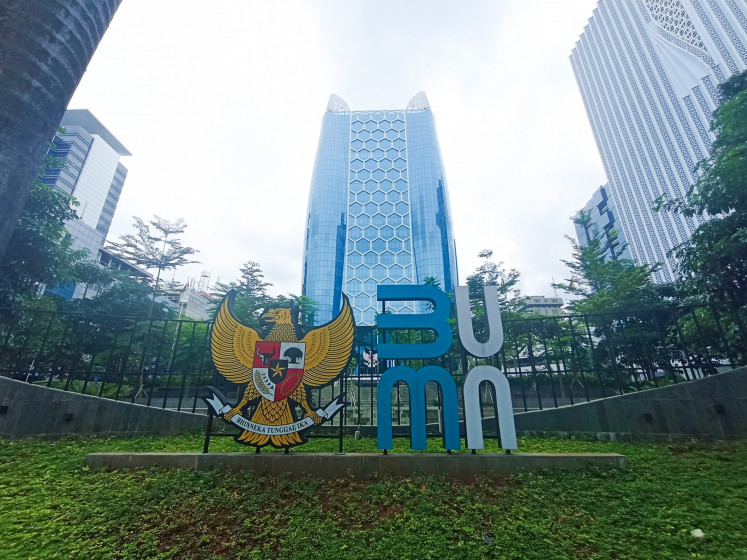Regency to boost hobbit tourism
Link to the ancient past?: Victor Darung, 83, (second right) and his wife, pose with Manggarai Regency Tourism Agency head Valentinus Sene (right) in Rampasasa hamlet, Waeri district, Manggarai regency
Change text size
Gift Premium Articles
to Anyone

L
span class="caption">Link to the ancient past?: Victor Darung, 83, (second right) and his wife, pose with Manggarai Regency Tourism Agency head Valentinus Sene (right) in Rampasasa hamlet, Waeri district, Manggarai regency. Darung is believed to descend from the homo floresiensis species, which is presumed to have lived on Flores 18,000 years ago. JP/Markus Makur
Two Austrian tourists, Gerald Haider and Iris Pinteristch, were lured by the magic of Flores island in East Nusa Tenggara: the Komodo dragon, the tricolor Kelimutu Lake, the ancient village of Waerebo and the archaeologically defiant Liang Bua cave.
'We are astonished by the Liang Bua archeological site. We read about the site from numerous scientific journals and guidebooks,' Haider said when visiting the island recently.
The Liang Bua limestone cave is home to the fossilized 18,000-year-old skeleton of a dwarf cavewoman, the discovery of which in 2003 was an international sensation.
Her scientific name is homo floresiensis, but she was nicknamed 'the hobbit' as she was only 1 meter tall with a brain the size of a baby's. The scientific hunt is on to prove that she and the dozen other hobbits discovered since are not a quirk of nature but members of a distinct hominid species.
The cave is located around 25 kilometers north of the Manggarai regency capital of Ruteng.
Manggarai deputy regent Deno Kamelus said that the local administration was planning to improve infrastructure and facilities to attract more tourists to Liang Bua.
'This year, we are going put an asphalt layer on the main road. Hopefully more people will come here,' Deno said.
The official said that the regency aimed to boost the local economy through souvenir and craft sales. 'We are going to keep supporting and improving local craftsmen,' Deno said.
Kornelis Jaman, an officer at the Manggarai tourism agency, said that since the finding of homo floresiensis, Liang Bua had received visitors each day.
Villagers around the cave believe that some of their ancestors and fellow residents were descendants of ancient dwarf people.
According to local data, there are currently around 630 people living in areas around the cave who range in height from 135 centimeters to 150 centimeters. They live in Rampasasa village in Waemuli, Akel village in Bere and a number of other villages in Flores.
Researchers from the Eijkman Institute for Molecular Biology in Jakarta have collaborated with University of California researchers to trace the presence of the genes of prehistoric Denisovan and homo floresiensis humans in modern-day residents of Flores.
The Eijkman Institute researchers said that Indonesia was home to a wide variety of ancient hominid humans. Although anthropologists could physically determine that the ancient humans found in Liang Bua were different from other hominids, they said the differences could be precisely determined and analyzed through a DNA test.
According to the Biomolecular Engineering Department of the University of California, fossils of ancient Denisovan humans had been found in the Althai Mountains, Siberia.
Parts of DNA fragments of Denisovan people can only be found in populations living east of the Wallace Line, namely in Australia, Flores, Maluku, Oceania, Papua and the Philippines.









